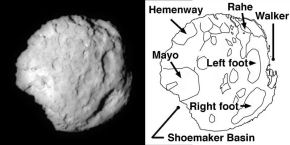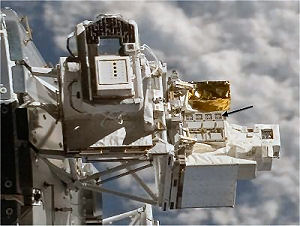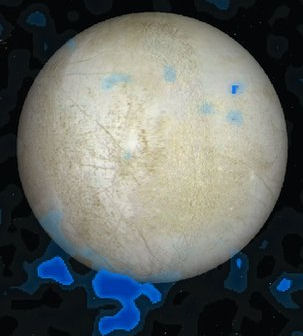
The idea that comets are “dirty snowballs” frozen in time looks set for revision now that scientists have found evidence of liquid water in samples of the Wild-2 comet returned to Earth by NASA’s Stardust mission.
“Current thinking suggests that it is impossible to form liquid water inside of a comet,” said the University of Arizona’s Dante Lauretta, the principal investigator of the returned samples. Lauretta’s report, published in the journal Geochimica et Cosmochimica Acta, directly challenges that notion.
Lauretta and his team made the discovery while analyzing dust grains brought back to Earth from the comet’s surface in 2006. “In our samples, we found minerals that formed in the presence of liquid water,” explained co-researcher Eve Berger. “At some point in its history, the comet must have harbored pockets of water.”
Unlike asteroids, which are chunks of rock and mineral, comets sport a tail – jets of gas and vapor that the high-energy particle stream coming from the sun flushes out of their frozen bodies.
“When the ice melted on Wild-2, the resulting warm water dissolved minerals that were present at the time and precipitated the iron and copper sulfide minerals we observed in our study,” Lauretta said. “The sulfide minerals formed between 50 and 200 degrees Celsius, much warmer than the sub-zero temperatures predicted for the interior of a comet.”
According to Berger, two ways to generate heat sources on comets are minor collisions with other objects and radioactive decay of elements present in the comet’s mixture. Heat generated at the site of minor impacts might generate pockets of water in which the sulfides could form very quickly, within about a year. This could happen at any point in the comet’s history. Radioactive decay on the other hand, would point to a very early formation of the minerals since the radioactive nuclides would decay over time and cause the heat source to flicker out.
The findings show that comets experienced processes such as heating and chemical reactions in liquid water that changed the minerals they inherited from the time when the solar system was still a proto-planetary disk, a swirling mix of hot gases and dust, before it cooled down enough for planets to form. The results demonstrate the increasingly apparent connections between comets and asteroids.
“What we found makes us look at comets in a different way,” Lauretta said. “We think they should be viewed as individual entities with their own unique geologic history.”
Related:
“Hot” Comets The Source Of Life?
More evidence for asteroids creating life on Earth
Discovery of asteroid water hints at oceans’ origins
DNA Precursors In Meteorite Confirmed As Extraterrestrial


















Comments are closed.